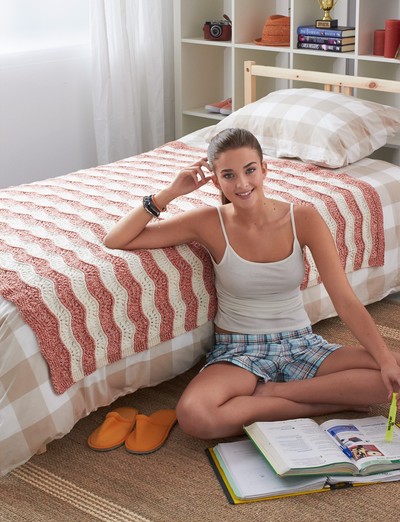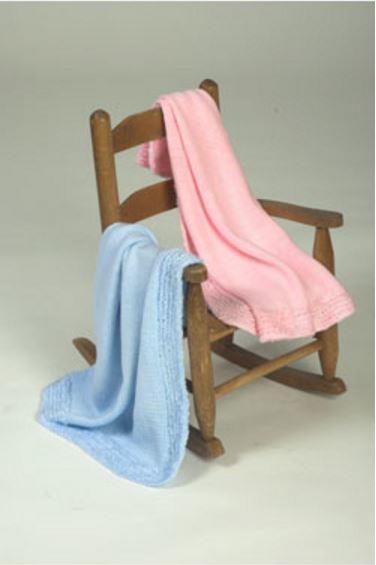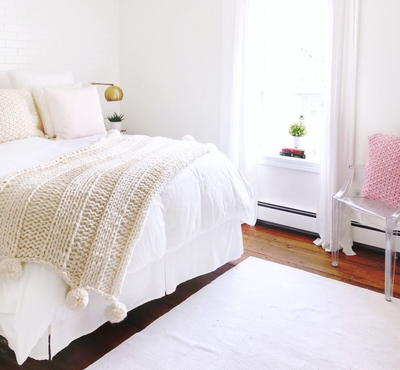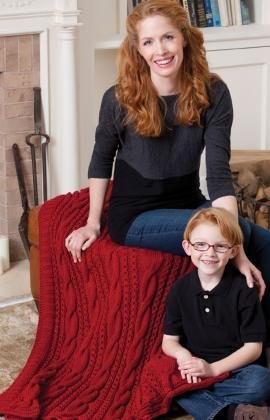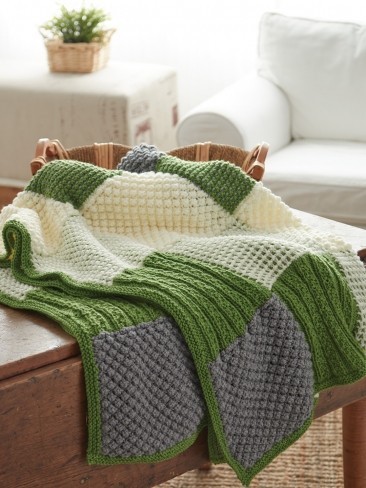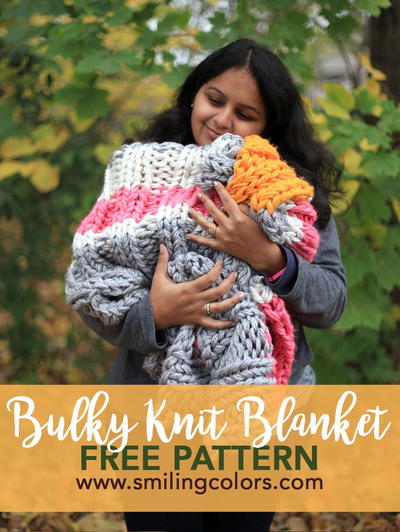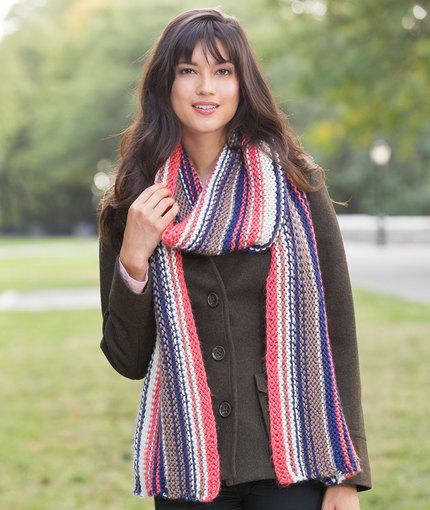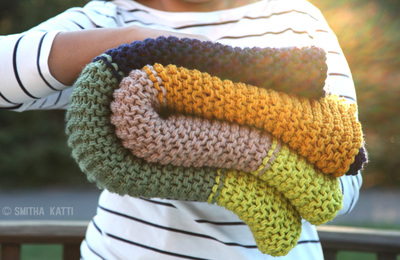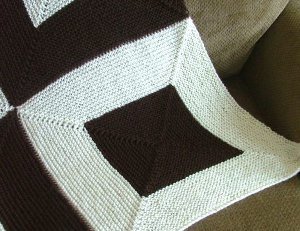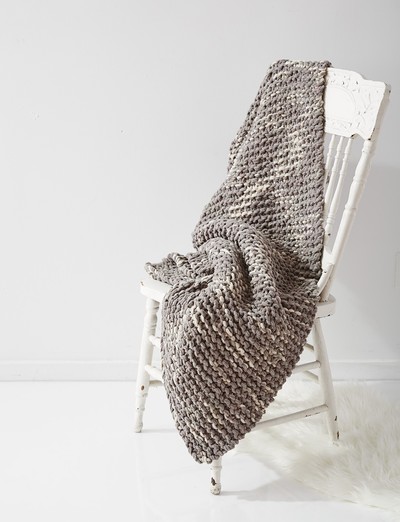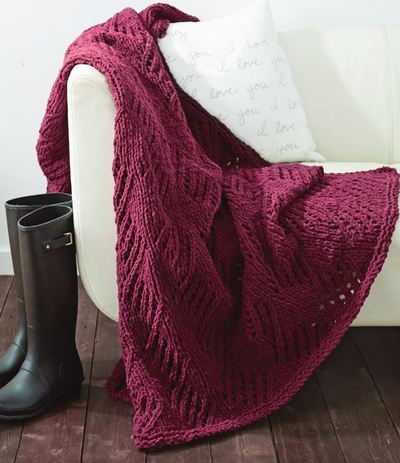Ripple Effect Afghan
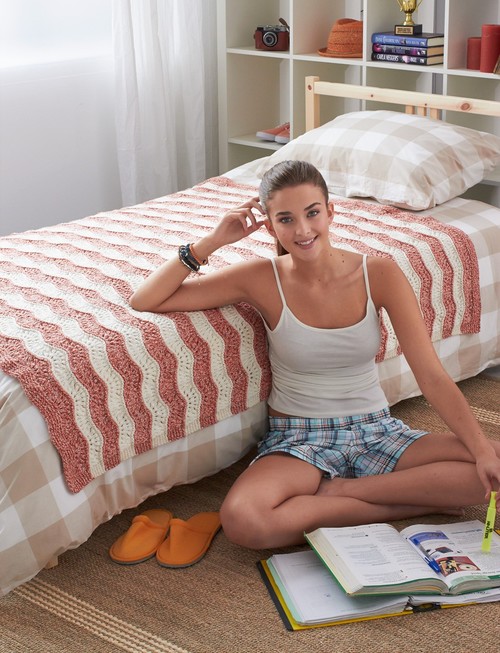
Get ready to spread the warmth with the Ripple Effect Afghan. Learning how to knit a blanket has never been more rewarding than with this easy knit blanket pattern. Even beginner knitters can cast on this beautiful blanket. Sure, it may be a little bit time consuming to finish, but there's nothing better than being able to curl up beneath a knitted blanket you've made yourself. Cast on the Ripple Effect Afghan and let this free printable take you on a ride you'll never forget. What makes this knit afghan pattern great is that it is the one knit you'll ever grow out of. So what are you waiting for? Get started on the knit that will last you a lifetime.

Knitting Needle Size8 or 5 mm, Circular Knitting Needles
Yarn Weight(4) Medium Weight/Worsted Weight and Aran (16-20 stitches to 4 inches)
Gauge1 stitches, 2 rows, 3 inches. stockinette stitch
Materials:
- Bernat® Denimstyle™ (100 g/3.5 oz; 179 m/196 yds)
- Contrast A Pumpkin (03630) - 7 balls
- Contrast B Canvas (03006) - 6 balls
- Size U.S. 8 (5 mm) circular knitting needle 36" [90 cm] long or size needed to obtain gauge
GAUGE: 18 sts and 24 rows = 4" [10 cm] in stocking stitch
Measurements: Approx 45" x 63" [114.5 x 160 cm]
Abbreviations:
Approx = Approximate(ly)
Beg = Beginning
Cont = Continue(ity)
K = Knit
K2tog = Knit next 2 stitches together
Pat = Pattern
Rep = Repeat
Ssk = Slip next 2 stitches knitwise one at a time. Pass them back onto left-hand needle, then knit through back loops together
St(s) = Stitch(es)
WS = Wrong side
Yo = Yarn over
Instructions:
With A, cast on 214 sts. Do not join. Working back and forth across needle in rows, proceed as follows:
Knit 7 rows (garter st), noting 1st row is WS.
Proceed in Wave Pat as follows:
1st to 3rd rows: Knit.
4th row: K5. Purl to last 5 sts. K5.
5th row: K5. *(ssk) 3 times. (yo. K1) 5 times. yo. (K2tog) 3 times. Rep from * to last 5 sts. K5.
6th row: As 4th row.
7th row: Knit.
8th and 9th rows: As 4th and 5th rows.
10th row: As 4th row.
11th and 12th rows: Knit.
13th to 24th rows: With B, as 1st to 12th rows.
These 24 rows form Wave Pat.
Cont in Wave Pat until work from beg measures approx 60" [152.5 cm], ending on a 12th row of Wave Pat.
With A, knit 7 rows (garter st). Cast off knitwise (WS).
Read NextJunk Yarn Dog Afghan
Your Recently Viewed Projects
lyndyhave71 772190 7
Aug 03, 2018
I am following the directions as it states. But I have to keep counting my stitches because they are not totaling 214. some rows are less others have more. Please help!
Lisa
Jan 13, 2021
Your stitch count should not change, it should be consistent row to row. For every SSK and K2tog you do there is a yo to compensate for the reduced stitches in the pattern. The pattern repeat is 17 stitches, SSK and K2tog use 6 stitches to complete each set of directions, there are 6 yo's elsewhere in the directions to compensate and bring the stitch count back to the original 214 stitches, if you are losing or gaining stitches look to your yo, that stitch makes it easy to lose or gain stitches, if it is not done correctly or is dropped accidentally. Hope this helps someone, happy knitting.
tmorgans1 3542383
Nov 18, 2017
Started to make ripple effect Afghan but the instructions do not tell which rows are which color. Can you help with this so I can finish making afghan.
Lisa
Jun 08, 2018
The pattern actually states "with B" 13th - 24th rows. so you are working 12 rows in each colour following the 24 row pattern.
jdscott 2942525
Jan 18, 2017
"Ssk = Slip next 2 stitches knitwise one at a time. Pass them back onto left-hand needle, then knit through back loops together" the way I'm interpreting this, it sounds like i'm slipping two onto the right needle and then slipping them back to the left needle? it seems like that's unnecessary to slip them to the right if I'm going to be putting them back on the left? Am I interpreting those instructions incorrectly?
Lisa
May 06, 2017
Yes and no, the process noted here stacks the stitches that are slipped back to the left hand needle. Back in the day this stitch was called knit together through the back of the loop, I'm quite old school after knitting for 50 years or so, I still use the k2togtbl, rather than this new way. The difference is when slipped from left to right the first time, it's one at a time, when they are slipped back to the left needle they are slipped together, causing a stacking effect that can be achieved with the old school stitch I just mentioned. Hope this helps someone.
3cats2love
Jul 04, 2017
I agree with you, I think calling it slip, slip, knit (ssk) is a little confusing. Also, they make it sound like you're just transferring the stitches from one needle to another and back, when all you're really doing is slipping two, then putting the tip of the left needle through the front loops so you can knit them together through the back loops. I like k2togtbl better too.
Elainemouse
Dec 31, 2017
Instead of SSK, Sl1, K1, PSSO (pass slip stitch over). It gives the same effect and is much easier to do.
Report Inappropriate Comment
Are you sure you would like to report this comment? It will be flagged for our moderators to take action.
Thank you for taking the time to improve the content on our site.

